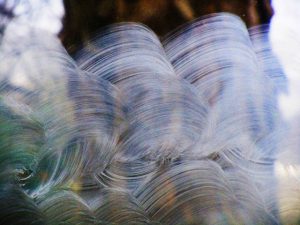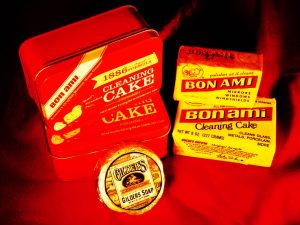Learn how to properly prep a window before gilding. By following the techniques in this story you will achieve good adhesion of gold leaf to glass…
Proper prior preparation of a glass surface is absolutely critical to achieving good adhesion of the gold to the window. Contaminants on the glass could cause the gold leaf to flake off of the surface, if not immediately, than later down the road.

Experienced gilders will clean the surface of the glass several times before laying gold leaf. Cleaning interior glass surfaces in restaurants and bars often requires extra care. Cigarette smoke and greasy residue from cooking can be very difficult to remove.
While you would guess that water size and paint adheres better to new glass than old glass that usually is not the case. Here’s why. Over several years a glass window can become pitted and scratched. This gives the glass more “tooth” for the size and paint to adhere to.
The manufacturing process can also contaminate new glass. Just because the glass is new is no reason to shortcut surface preparation procedures. For good adhesion of the gold leaf to the glass, you must remove the contaminants or the gold will chip and peel.
Many of the recommended cleaning procedures for glass gilding are very similar to the surface preparation recommended for vinyl application. Just as you should never use glass cleaners that contain silicone, such as Windex, in a window graphics application, residue from these cleaners can also cause problems with the gold leaf adhering to the glass.
To clean any oily residue on the glass, first clean the glass with a wax and grease remover, such as DuPont’s 3919S Prep Sol. These solvent cleaners can leave an oily residue, which should be wiped off with isopropyl alcohol (IPA).
Washing the Glass with Cake Bon Ami.
After solvent cleaning, wash the surface with Gilder’s Soap or Cake Bon Ami. After wetting the soap, rub the surface of the bar with a natural sponge or rag and then scrub the surface of the glass with the lather. The gritty Gilder’s Soap is mildly abrasive, which gives the glass a little “tooth”, so the size and the gold leaf will mechanically bond to the surface. After the lather dries on the glass, wipe it off with a clean cotton rag. Then scrape off any residue from the surface with a razor scraper. Perform this cleaning at least twice. Cleaning with the razor scraper is very important, because often the surface of the glass has tiny specs of paint and other contaminants that you can’t see.

Cake Bon Ami had been used by gilders in the past. Today it is in very limited supply and difficult to find. As an alternative, I recommend using Gilder’s Soap. Gilder’s Soap and other esoteric supplies for gilding are available at www.letterheadsignsupply.com.
The final step is to clean the surface two times with isopropyl alcohol (IPA). This last step will clean off the slight haze that the Gilder’s Soap may have left. To check whether the cleaning is adequate, you can wet the surface of the glass. If the water beads up on the glass, it’s not clean enough. Keep cleaning.
While this cleaning procedure may seem excessive, just remember that nobody makes money on rework. Spending a little extra time cleaning is preferable to redoing the job a second time, just to fix up your screw ups.


